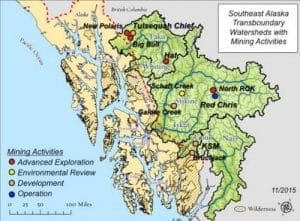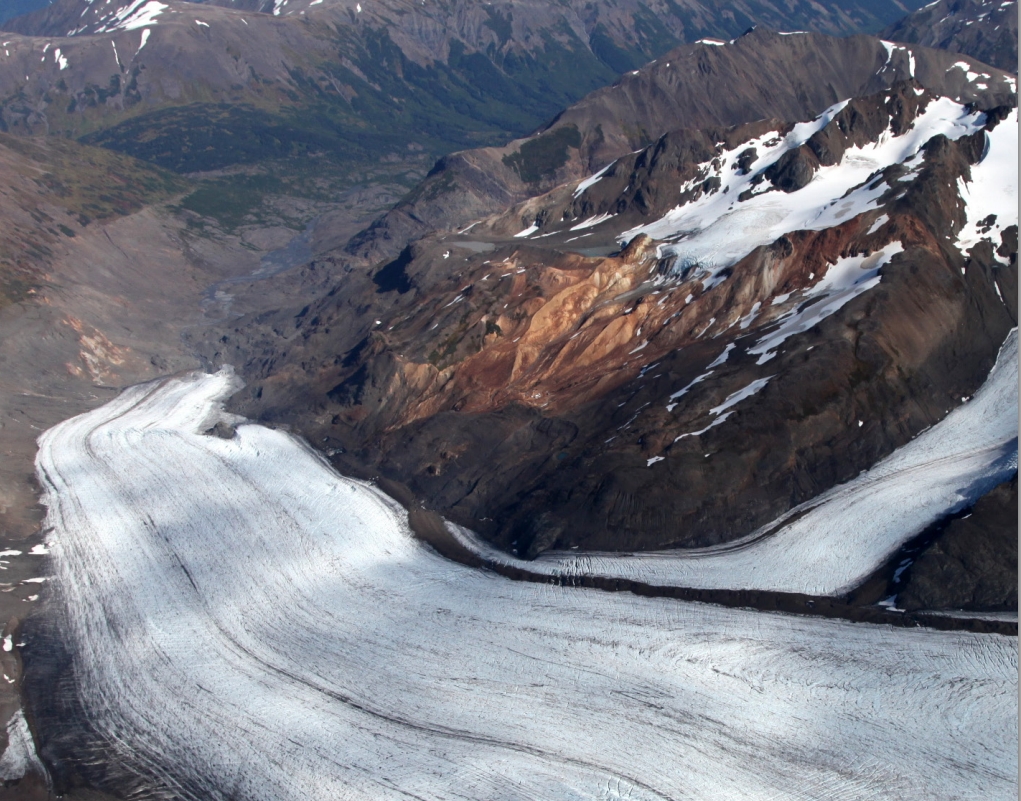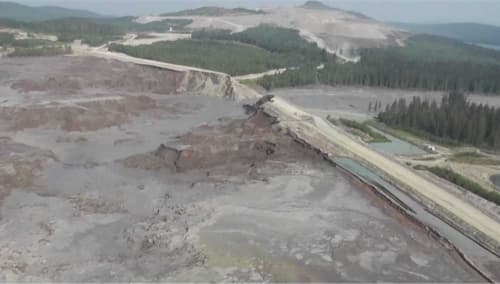Risks escalating due to more frequent catastrophic weather events related to climate change
 SEATTLE – British Columbia’s rapidly accelerating mining boom – and the dangerous waste that accompanies it – threaten communities and watersheds in neighboring states, including Washington, Alaska, Idaho and Montana according to a new report. Climate-fueled floods and disasters are exacerbating the threats these mines pose.
SEATTLE – British Columbia’s rapidly accelerating mining boom – and the dangerous waste that accompanies it – threaten communities and watersheds in neighboring states, including Washington, Alaska, Idaho and Montana according to a new report. Climate-fueled floods and disasters are exacerbating the threats these mines pose.
The report coincides with the publication of an interactive online map that clearly details how billions of metric tons of toxic liquid mine waste, called tailings and stored in British Columbia dams, present unacceptable and irreversible risks to vulnerable U.S. communities downstream. The dams that hold these toxic tailings are among the highest in the world, and British Columbia plans to expand on existing structures.
“Washington and British Columbia are neighbors that share so much that is good, including some beautiful rivers that flow south across the border,” said Mitch Friedman, executive director of Seattle-based Conservation Northwest. “But this report shows that British Columbia is playing fast and loose with its mining waste, putting the entire Northwest region, its communities and resources at dire risk. That is anything but neighborly of them.”
One major threat to U.S. waters is the Copper Mountain copper mine, located just 25 miles from the Washington border on the Similkameen River, which feeds into the Columbia River watershed. Mine operators have proposed a plan to increase the height of one of its tailings dams to 853 feet — 250 feet higher than Seattle’s Space Needle. This would make the Copper Mountain Mine tailings dam the second tallest in the world.
The sheer volume of tailings looming over the Similkameen is deeply concerning, earning the Copper Mountain Mine a ranking among the “Dirty Dozen” mines for poor environmental practices and non-compliance with environmental regulations.
“This alarming report clearly highlights the potentially catastrophic impacts of a tailings dam failure for our region. With billions of cubic meters of toxic liquid mine waste just on the other side of the border, we are one mishap away from an event that will have dire consequences for human life, wildlife and local economies,” said Erin Farris-Olsen, Northern Rockies, Prairies, and Pacific regional executive director of the National Wildlife Federation. “Now it’s up to our elected officials to push the Canadian government for greater accountability, safety and regulation.”
Further north, one of the four tailings dams at the proposed KSM Project mine, which is slated to be sited close to the Alaska border in Northern B.C. near the transboundary Unuk River watershed, could rise to 784 feet. The tailings facility could hold up to 2.6 billion metric tons of wet tailings, the equivalent of 460,000 Olympic-size swimming pools.
“British Columbia’s industrial gold rush at the headwaters of rivers that flow into Alaska is a ticking time bomb and we are sitting ducks” said Breanna Walker, director of Salmon Beyond Borders, based in Juneau, Alaska. “That’s why, communities around Southeast Alaska are asking President Biden to urge a ban on these mine waste dams along the headwaters of our wild salmon strongholds. It’s time for British Columbia to clean up its act, clean up its contamination of our shared rivers, and for the world to take a hard look at just why British Columbia is greenlighting and greenwashing the destruction of wild salmon habitat for gold we don’t need.”
The report is based on a review of 86 existing and proposed mines in British Columbia and was authored by Dr. Steven Emerman, a geophysicist and international expert specializing in groundwater and mining.
Among the key report findings:
- Liquid tailings currently stored in British Columbia mines is conservatively estimated to be 4.25 billion metric tons, equivalent to the volume of one million Olympic-size swimming pools. This volume is expected to increase by 75 percent with the addition of 11 new mines.
- The death toll following a failure at many of the highest risk dams, holding back millions of metric tons of tailings, could be in the hundreds and could irreparably destroy sensitive salmon habitat, large-scale agricultural enterprises and vital infrastructure.
- Catastrophic flooding events, typically seen only once every 100 years, have become regular events in British Columbia and have the potential to overwhelm or destabilize tailings storage facilities in high rainfall areas, which is a major cause of dam failures globally.
- Several large tailings storage facilities in British Columbia are also in high-risk earthquake zones which further threaten the structural integrity of the dams.
RESOURCES
New Interactive Map – link here
New report and analysis – link here
Primer on the report and analysis – link here
###[content id=”79272″]







